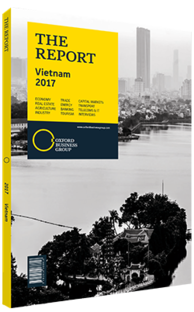Mai Kieu Lien, CEO, Vinamilk: Interview

Interview: Mai Kieu Lien
How can Vietnam stay competitive following the recent trade agreements?
MAI KIEU LIEN: As the agreements were recently signed, most regulations are still under discussion, and the government will need a few years to fully implement them. Even with new export regulations, local companies need to stay on their guard to ensure their own competitiveness. Currently, Vietnam’s dairy industry is not receiving any support or protection from the government, so the import-export tax is still very high for the countries involved. Under the trade agreements, tax duties are reduced by 2-3%, which is still not enough to significantly boost the sector’s export growth.
Many multinationals moved to Vietnam prior to the trade regimes’ approval and we have been competing with them for a long time already. In addition to that, the tax they pay on imports to Vietnam is relatively low, which gives them a competitive advantage compared to local producers. The tax for ingredients is 2-5%, so if you calculate the value of a final product for a local manufacturer before or after the implementation of the trade deal – taking into account the price of raw materials, manufacturing cost and tax – the difference is not significant.
In terms of infrastructure and development, the local dairy and beer manufacturers have the facilities to compete with international brands. However, the local manufacturing industry, including textiles, IT, telecoms and food industries, are not very developed due to a lack of technology. Companies in these industries will need to raise their standards in order to fully benefit from the new trade regime. Currently, the market is dominated by foreign players, and all investments are supported by them.
What are the biggest challenges for Vietnamese companies in expanding overseas?
LIEN: Most companies in Vietnam do not have the financial capabilities to go overseas; bank or government loans are the only solutions for local companies. The interest rate level in Vietnam creates an additional barrier to growth and expansion. It is rare that a company can manage the financing on its own; the majority of large companies finance themselves and do not have to rely on loans.
I can say that local Vietnamese companies have a lot of potential, but many are quite small. This means they would need to focus on their brand quality in order to compete on a foreign market, as demonstrated by most of the agricultural businesses in the country. In regards to rice and coffee exports, Vietnam is ranked second and third, but our brands are not known globally. The country is starting to realise the importance of branding, and local companies are working to build their brands on a global scale.
What kind of difficulties do domestic consumer goods manufacturers currently face in Vietnam?
LIEN: As in other ASEAN markets, Vietnam’s rapid urbanisation and rising incomes have led to a growing adoption of a Western lifestyle. This has led to a boom in fast-moving consumer goods such as dairy and beer. With Vietnam’s population growing by a million every year, the potential consumer segment is a great opportunity, and the penetration rate for beer and milk products has not yet maximised.
On the other hand, the purchasing power in Vietnam is also one of the lowest in the region, so a localised strategy based on pricing has to be put in place. The leading global dairy and beer multinationals have been entering the market because of these types of opportunities. Due to this increase in competition, local companies have been able to develop themselves to compete with international players. All things considered, the dairy industry in Vietnam still has room for more players to develop the industry further and consolidate their position in the next five to 10 years. By then, the market will have matured.
You have reached the limit of premium articles you can view for free.
Choose from the options below to purchase print or digital editions of our Reports. You can also purchase a website subscription giving you unlimited access to all of our Reports online for 12 months.
If you have already purchased this Report or have a website subscription, please login to continue.

